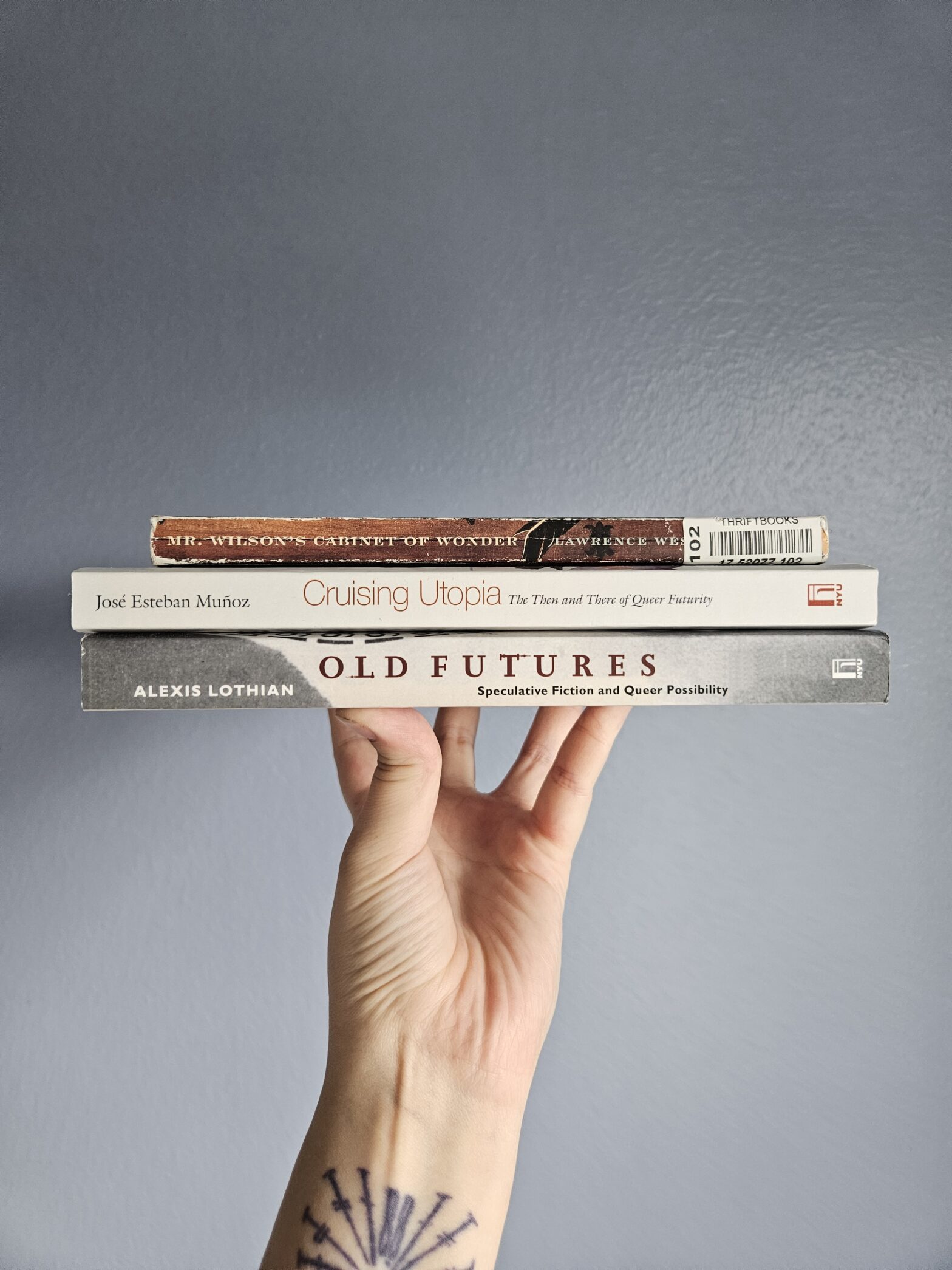Note: This is a written and edited version of my final presentation for BLOCK XXIV. The prompt was to present our art practice ecosystem of books, resources and references.
Mr. Wilson’s Cabinet of Wonder
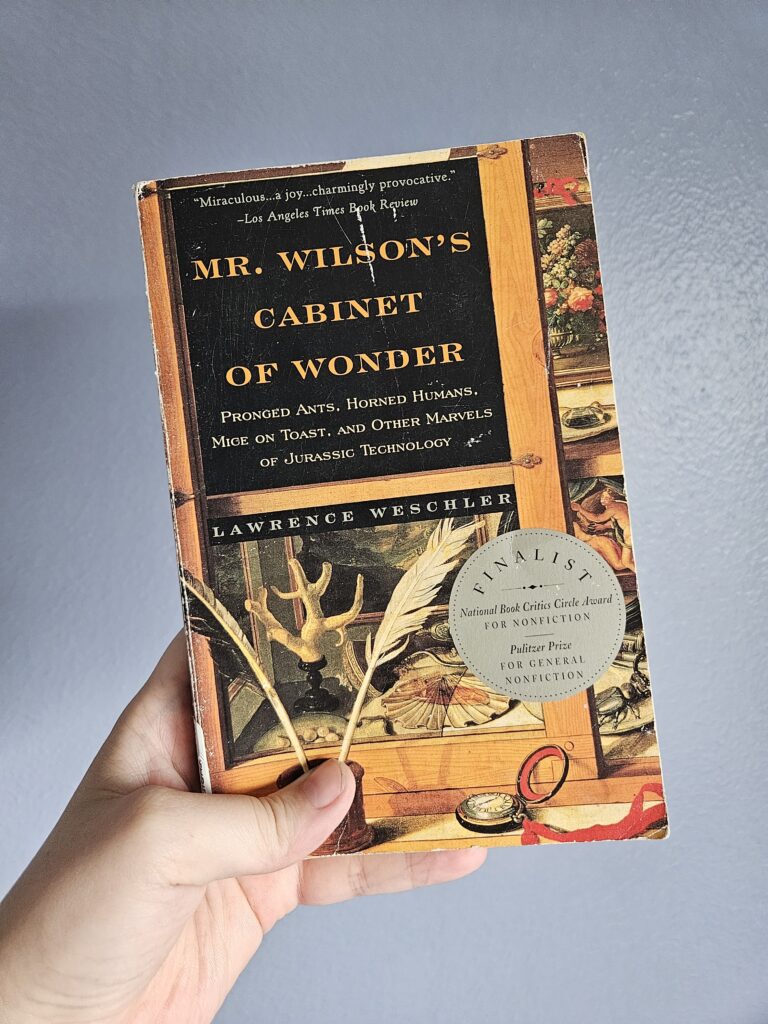
Roberto Tejada initially recommended this book to me during year one of BLOCK, and I remembered it again during my critique visit with Nick Vaughn earlier this semester. Throughout the past year of critiques, themes of worldbuilding, performance, exhibition displays and wonder have all repeated. I finally bought this book to help me understand and better develop these ideas.
Published in 1995, the book starts as an exploration of some of the Museum of Jurassic Technology’s exhibits, David Wilson, the creator of the museum, and the author’s initial experience visiting. I had no idea if what I was reading was true – though truth would be a concept to investigate later in the book. Weschler introduces the concepts that make the museum work: wonder inducement, mixing cabinets of curiosity with the design style of modern museums, the core “truth” of an object or exhibit, and Wilson’s exacting attention to detail and skill for storytelling.
(‘Part of the assigned task,’ David once told me, “is to reintegrate people to wonder.’) But it’s a special kind of wonder, and it’s metastable. The visitor to the Museum of Jurassic Technology continually finds himself shimmering between wondering at (the marvels of nature) and wondering whether (any of this could possibly be true). And it’s that very shimmer, the capacity for such delicious confusion, Wilson sometimes seems to suggest, that may constitute the most blessedly wonderful thing about being human.”
p. 60, Mr. Wilson’s Cabinet of Wonder: Pronged Ants, Horned Humans, Mice on Toast, and Other Marvels of Jurassic Technology by Lawrence Weschler
The themes of my work and the Museum of Jurassic Technology coincide: wonder and reimagination.
But I also loved the details about how Wilson displays the MJT – using the style and language of modern displays to put the viewer into a certain mindset.
Cruising Utopia and Old Futures
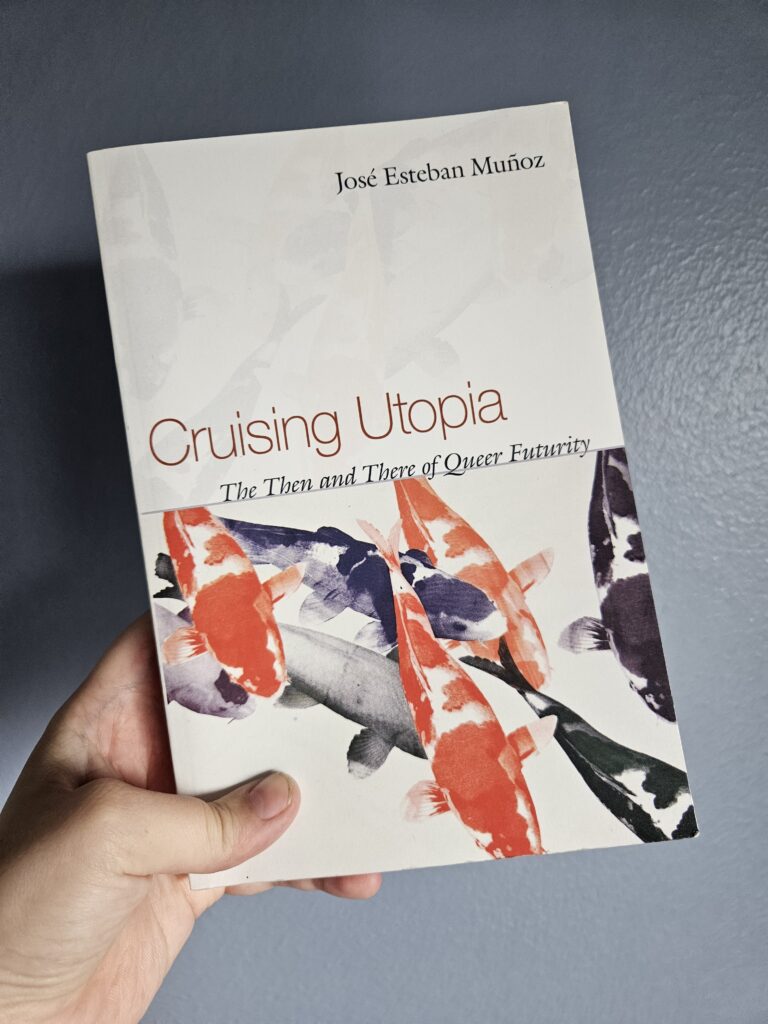
The next two books are in-process reads – it’s a slow digestion and I’m reading them at the same time, bouncing back and forth. I found Cruising Utopia: The Then and There of Queer Futurity by José Esteban Muñoz at the Inflatable Utopia Reading Room, part of Max Adrian’s show, RIPSTOP, at the Houston Center for Contemporary Craft. And then a week later, Laura had us reading Foucalt and utopias and heterotopias. I finally purchased the book in February, after learning about this next book.
I was searching for books about queer reimagining, wanting to continue down this path from Fray, which is the book I presented on last semester. I found Old Futures: Speculative Fiction and Queer Possibility by Alexis Lothian. But as I was doing the research, Cruising Utopia kept coming up and Lothian pointed to Cruising Utopia as jumping off point for Old Futures. So I bought both.
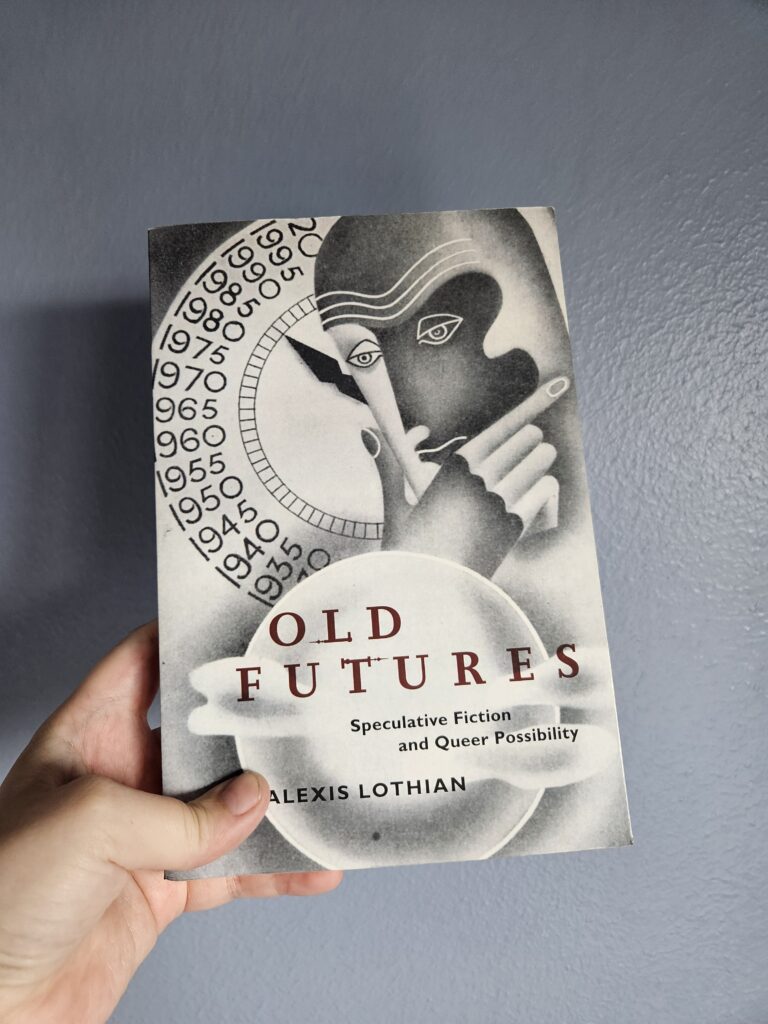
Through these two books, Munoz and Lothian have analyzed different ideas and work through queer theory. Munoz builds upon Ernst Bloch’s The Principle of Hope and ideas of concrete utopias, hope for the collective’s futures. Thus queerness is the future, the anticipatory.
Indeed, to live inside straight time and ask for, desire, and imagine another time and place is to represent and perform a desired that is both utopian and queer. To participate in such an endeavor is not to imagine an isolated future for the individual but instead to participate in a hermeneutic that wishes to describe a collective futurity, a notion of futurity that functions as a historical materialist critique.”
p. 26, Cruising Utopia: The Then and There of Queer Futurity by José Esteban Muñoz
Lothian specifically looks at media that counters the dominant ideas of what the future could be, especially in science fiction, turning instead to feminist, Afrofuturism and new media.
The possible and impossible futures speculated by and for oppressed populations and deviant individuals, who have been marked as futureless or simply left out by dominant imaginaries.”
p. 2, Old Futures: Speculative Fiction and Queer Possibility by Alexis Lothian
Like I said, I’ve only partially read both books, so I can’t go into too much depth, but again, these themes are highly relevant to the Universe Flags and back to the suits as well.
Eclipse Impact
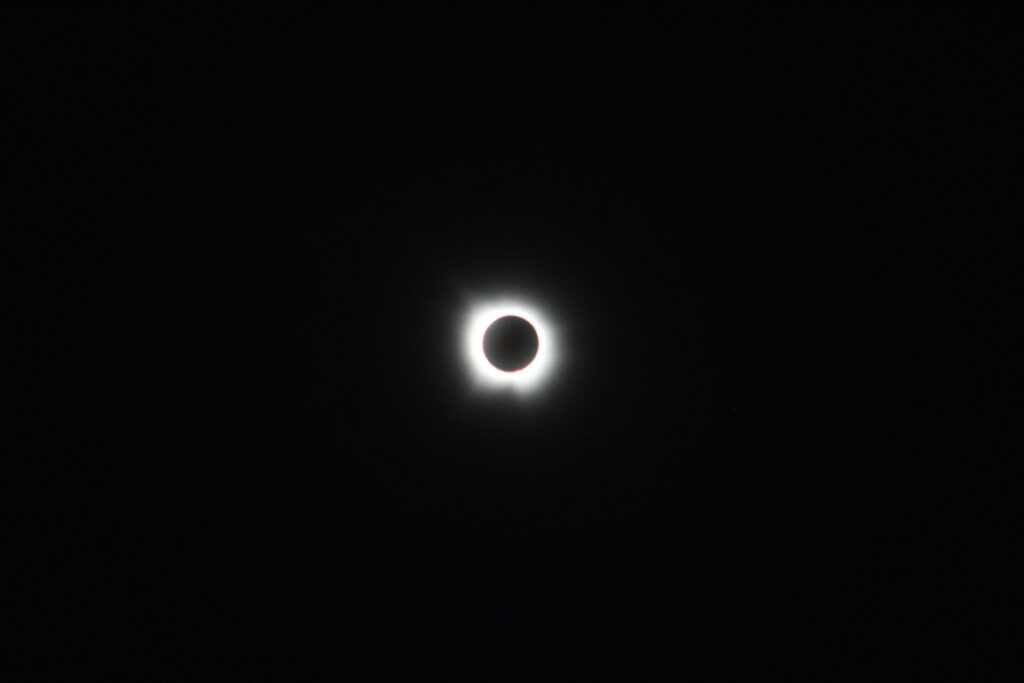
Lastly, I’m going to go down a bit of a different route in my ecosystem. The total solar eclipse on April 8 has been and still is impacting my practice. For at least a year prior, I was preparing for the eclipse – but in a scientific way. As part of my job, I helped share presentations and resources about the science of eclipses and built a course dedicated to the eclipse. All the numbers and science, but none of the history or emotion or affect. Until about a month out when I decided I needed to see it for myself and fell into the non-science research of eclipses. I found how other artists have depicted eclipses and writings about eclipse chasing. I bought this artist’s book, Eclipse of the Sun by Emily Sheffer, which was a collaboration or continuation with William and Federick Langenheim who made seven daguerreotypes of the total eclipse in 1854. I started freewriting leading up to the eclipse. And during totality, even though it was exactly as the science and art and history prepared me for, I still was in wonder, leaning towards the terror/awe side. This moment of wonder reminded me why I want to have wonder as core theme in my art practice and my life overall, and why I want to incorporate it into my art for the viewer.
